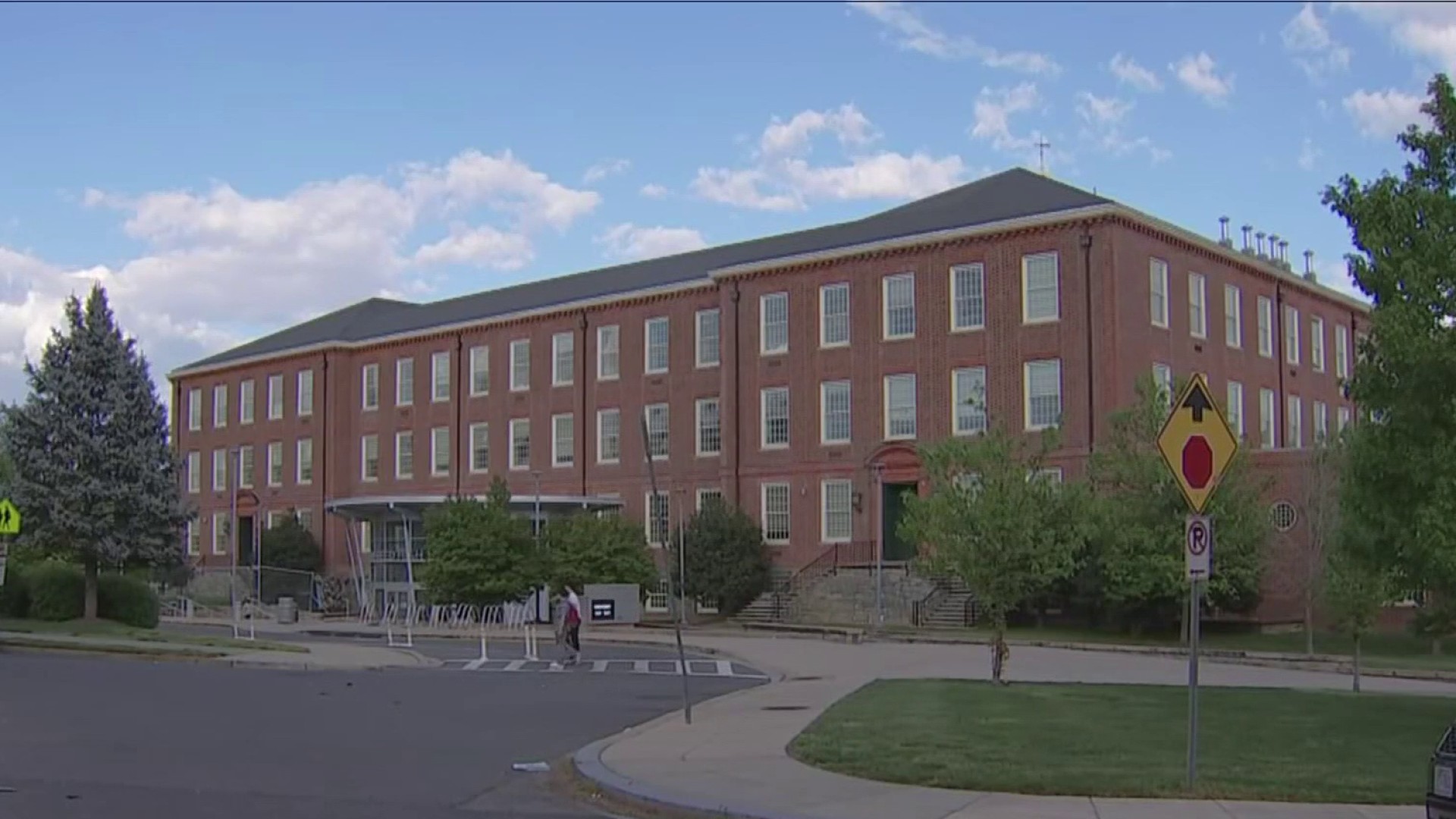The District’s gripes about the boot of Congress on the city’s neck, always an undercurrent in D.C. politics, have gotten a bit more strident this year. Pols have speechified on the steps of Capitol Hill office buildings, getting carted off to jail when they sat down in the street and refused to budge. Mayor Vince Gray followed the arrests up with a steady stream of irate press releases and demonstrations, while Councilmember Michael A. Brown tried to pass legislation that would rename part of Pennsylvania Avenue to commemorate D.C.’s second-class status, in an activist upsurge of the sort that arises every few years and then fades away.
The annoyance is justified, of course: The District benefits from the presence of the federal workforce, sure, but when a Congress that can’t even pass its own budget starts telling D.C. how it can and can’t spend local dollars, the relationship looks a bit one-sided.
But that’s Congress, the governmental body. What about Congress, the physical body? How does the Capitol function as a neighbor to the people who live and work around it?
There, again, being in the federal government’s backyard has its upsides and downsides. On one hand, the need for lobbying shops to be walking distance from House and Senate office buildings keeps the real estate market within a few blocks tight, and supplies nearby bars with a steady stream of suit-wearing patrons -- many of whom are even starting to make their way further afield, to H Street NE and beyond. And of course, the Capitol grounds are a beautifully maintained park, free for all to enter.
“It’s kind of living in a neighborhood with a big rich mansion owner down the street, and for this particular mansion, it’s generally open, it’s not behind a big wall or something,” says local Advisory Neighborhood Commissioner Bill Crews.
On the other hand, there’s something oppressive about the presence of an institution so heavily garlanded in ceremony and security. Over the past decade, it’s become impossible to enter any building without identification, or walk anywhere without the watchful eye of an armed police officer. The east and west fronts of the Capitol have been closed to the public, probably forever. Some nearby office buildings have inoperable windows on their top floors and highly restricted roof access, denying snipers the opportunity to pick off dignitaries from aloft -- or workers the opportunity to enjoy the view.
Local
Washington, D.C., Maryland and Virginia local news, events and information
And then, of course, there are the fume-belching tour buses that must dispel their charges farther and farther from the Capitol, as security-minded traffic restrictions force hordes of tourists to make their way toward the Capitol Visitor Center on foot.
People who live around other large institutions, like universities and hospitals, don’t have to put up with that sort of situation. Despite shrill complaints about rowdy students at American and Georgetown, being close to those campuses is probably a greater amenity than the Capitol’s gated grandeur.
As much as some neighbors have adopted the Capitol complex as their own, it remains, in essence, a neighborhood apart. Most of the Capitol is actually unzoned, giving D.C.’s zoning commission no authority, though the federal government appoints two of the five commissioners. Even the federal National Capital Planning Commission can’t touch the buildings or grounds. Those remain the exclusive province of the Architect of the Capitol, a powerful landlord appointed by the president and confirmed by the Senate to a 10-year term. He -- all 11 have been male -- determines what gets built where and what it looks like, subject to congressional approval.
By and large, the architects have executed their duties competently, building out the 460-acre Capitol complex with marbled monumentality. But on one front, the office remains a failure: Managing the many large expanses of concrete that still blanket blocks of the campus, providing free parking to lawmakers and staff. While the rest of D.C. has gotten over its suburban love affair with surface parking lots -- especially downtown, where one by one, they’ve been snapped up for new buildings -- the Capitol complex has at least five full city blocks of them, in addition to at least eight underground parking garages, none of which are ever available to the public.
At a minimum, above-ground parking lots are a waste of some of the most valuable land around. But beyond that, they’re a blight on what’s otherwise a graceful, walkable place. The Capitol’s overseers like to laud their sustainability efforts, and certainly its inhabitants talk a lot about the power of the free market. Hanging on to acres of parking at no cost to staff, no matter how many rain gardens you install, puts the lie to both.
—-
The Architect of the Capitol started to incorporate parking into new buildings as car commuting increased and the grounds filled out. The first large legislative garage was completed in 1932, with space for 275 cars. Still, there wasn’t much compunction about parking cars wherever space was available. Aerial shots from the 1950s shows several ranks of parking on the east side of the Capitol building for maximum convenience to votes, and an entire block south of the Library of Congress was filled with cars before the construction of the James Madison Memorial Building.
How much parking exists at the Capitol today? That’s difficult to say, since the Architect of the Capitol and the House Administration and Senate Rules committees declined to divulge that number, as well as the number of permits that are handed out to offices for divvying up to staff, citing -- naturally -- security concerns. What we do know, from a plan for the southern part of the Capitol complex completed by Wallace Roberts & Todd Architects in 2005, is that the House has 5,772 parking spaces assigned to it, 2,180 of which are underneath the Rayburn House Office Building.
That plan, which won awards from the American Institute of Architects and the Congress for the New Urbanism, shows new buildings and parks on most of the surface parking lots that currently exist, and recommends decking over a section of I-395 to build new parking garages, while converting Rayburn’s basement into office space and hearing rooms. But no one’s following it right now. According to WR&T, the Architect of the Capitol is folding it into a new Capitol Complex Master Plan that also can’t be released while it’s under development; the last one was completed in 1981. (A spokeswoman for the office wouldn’t even provide a copy of that 30-year-old plan.)
In the meantime, tectonic plates are shifting in other parts of the federal world. The National Capital Planning Commission has gotten with the parking-lite program, and is about to adopt new standards for parking that will call for no more than five employees per space at federal facilities. At the same time, a tea-partying Congress is pushing the General Services Administration to sell off underused real estate in hopes of streamlining the federal portfolio and generating some extra cash.
The Capitol grounds don’t fall under the General Services Administration’s authority; Congress tends to exempt itself from policies it pushes on the executive branch. But how much would they net the government if they were sold off?
Adding up each of the lots, using their current D.C. assessed values, yields a ballpark estimate: About $350 million.
And that’s before anyone builds on them. Right now, the blocks just west of Capitol Hill command the highest commercial rents in the city, and you can bet on property between Union Station and congressional office buildings doing the same. Even better, sell the land with the requirement that it be used for residential buildings, making it easier for all those 20-something staffers who now live in Virginia to get up and walk to work.
That would be a more environmentally friendly land-use decision, in the sense of bringing jobs closer to transit. But a special office created in 2007 to “green the Capitol” seems satisfied with more traditional and easy-to-accomplish sustainability measures, like recycling and reducing energy consumption; a question about the future of parking lots was diverted back to the Architect of the Capitol.
The Capitol is not only immune to District regulation, but also to market forces, since the federal government pays no property taxes. That’s created an urban space predicament even more intractable than Congress’ control over D.C.’s laws and finances -- so much so that it hardly seems worth getting arrested over.
Visit the Housing Complex blog every day at washingtoncitypaper.com/blogs/housingcomplex. Got a real-estate tip? Send suggestions to ldepillis@washingtoncitypaper.com. Or call 202-650-6928.
No City on the Hill was originally published by Washington City Paper on Jul 14, 2011




